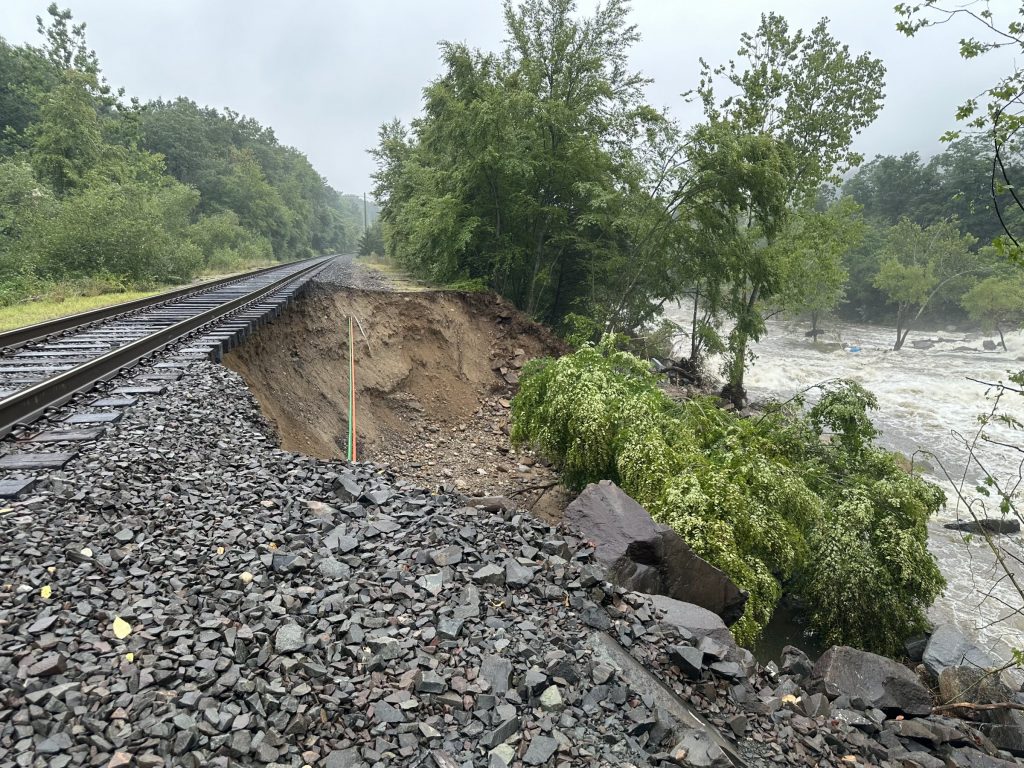
New Haven, CT – This weekend heavy rains and devastating flooding swept through the Long Island Sound region. Southwestern Connecticut and Long Island were hit especially hard, with flash flooding damaging homes, washing out roads, and submerging low-lying areas under as much as 10 inches of rainfall.
Our thoughts are with everyone affected by the storms and the families of the two lives lost. We remain hopeful for the safe return of those still missing.
Sudden, intense, and unexpected storms like this are no longer rare; they are becoming the new normal due to climate change. The frequency of heavy rainfall has increased by 10 percent in the last 50 years, bringing more frequent and severe flooding across the world. What was once considered a once-in-a-1,000-year disaster is now a recurring reality, and one that is not going away anytime soon.
“Climate change is no longer an abstract problem,” said Charles Rothenberger, climate and energy attorney with Save the Sound. “Connecticut’s and New York’s residents continue to experience the very real and direct impacts imposed by the changing climate. This latest round of severe flooding comes mere months after similar flooding in the southeastern part of Connecticut and follows a summer defined by multiple back-to-back heat waves. The direct public health, economic, and environmental consequences of these events underscores the need for action to lower emissions to avert even more damaging events in the future.”
Our region’s infrastructure is at risk.
In Connecticut, Route 34 washed out and over a dozen roads closed, and Metro-North’s Danbury and Waterbury lines were suspended going into this morning’s commute. In New York, parts of the Long Island Expressway, the Bronx River Parkway, and the Major Deegan Expressway among others were closed or blocked by floodwaters. At least 100 homes along Long Island’s North Shore were reportedly inundated, and Suffolk County officials are estimating damages up to a hundred million dollars. Flooding disrupts transportation and leads to wastewater releases and runoff pollution, further endangering public health during a critical period of recovery.
Residents of Connecticut’s Naugatuck Valley who live downstream of the Stevenson Dam along the Housatonic River were notified by First Light Power, the utility company that owns the dam, to prepare for flooding. As of 6:45 p.m. on Sunday, the river crested at 21.5 feet, surpassing its “major flood stage” level. Thankfully, the dam (which is a hydroelectric dam and not a flood control structure) did not breach.
Regularly inspecting, repairing, and removing dams that pose a great risk of breaching can help prevent potentially catastrophic flooding when these historic rainfall events occur.
“The Naugatuck River has a long history of flooding, and our hearts go out to families that are dealing with the aftermath of yesterday’s significant rainfall, including members of my own family,” says Laura Wildman, president of ecological restoration at Save the Sound. “Most dams are not flood control dams and cause additional flooding by raising flood levels behind the dam, which increases flood risk downstream when not maintained. Removing derelict dams is one way we can help to reduce flooding during significant climate-related events.”
Flooding is complex in both causes and effects, but the urgency for a robust, resilient infrastructure plan that includes bridges, culverts, and road stream crossings with flooding in mind is clearer than ever. We should be increasing the use of green infrastructure and protecting our region’s forests and marshes that naturally slow and filter floodwaters. To protect residents across the region from escalating climate impacts, we must act now to prepare for the challenges of the coming decades.
This weekend’s storm was a costly reminder of the consequences of inaction. With lives at stake, we cannot afford to delay any longer.
###
